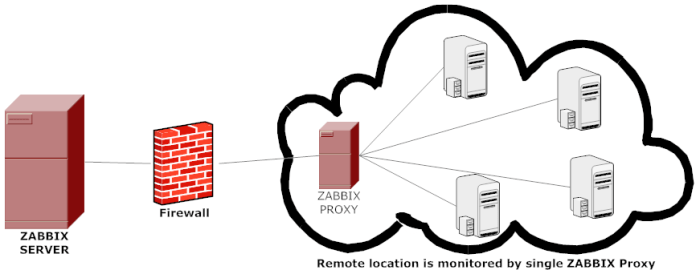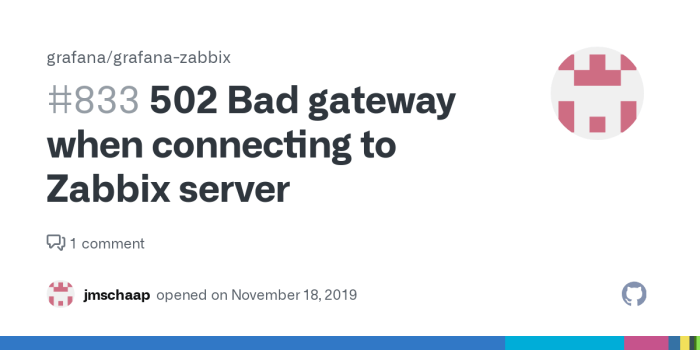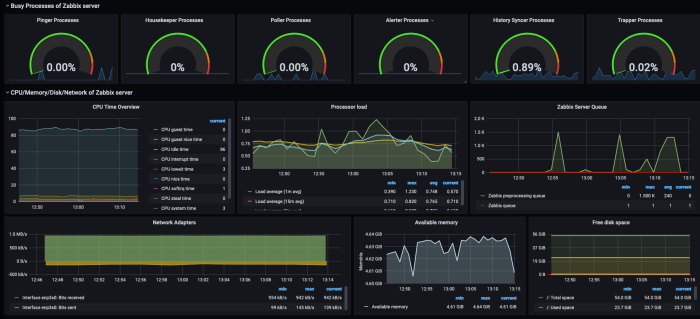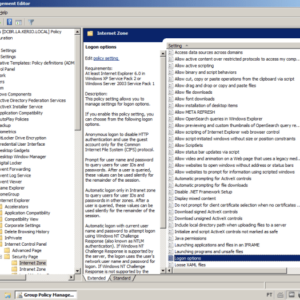Zabbix server vulnerability: It’s a phrase that sends shivers down the spines of sysadmins everywhere. Imagine your meticulously crafted monitoring system, suddenly wide open to exploitation. This isn’t some abstract threat; we’re talking about real-world attacks, data breaches, and the potential for serious financial and reputational damage. This deep dive explores the common vulnerabilities, how attackers exploit them, and—most importantly—how to secure your Zabbix server before it’s too late.
We’ll dissect the technical nitty-gritty, examine real-world attack scenarios, and arm you with practical mitigation strategies. From vulnerability scanning and penetration testing to incident response and server hardening, we’ll cover it all. Think of this as your ultimate survival guide in the wild west of Zabbix security.
Zabbix Server Vulnerabilities
Zabbix, a popular open-source monitoring system, isn’t immune to security flaws. While regular updates mitigate risks, understanding common vulnerabilities is crucial for maintaining a secure monitoring infrastructure. This section details five prevalent vulnerabilities, their impact, technical mechanisms, and remediation strategies. Ignoring these vulnerabilities can expose your system to significant risks, including data breaches, service disruptions, and unauthorized access.
Prevalent Zabbix Server Vulnerabilities
Several vulnerabilities have historically affected Zabbix servers, posing significant security risks. Understanding the nature of these vulnerabilities is key to implementing effective security measures.
| Vulnerability Name | Severity (CVSS Score) | Exploitability | Remediation Steps |
|---|---|---|---|
| Unauthenticated Remote Code Execution (RCE) | 10.0 (Critical) | High – Exploitable via crafted requests to vulnerable endpoints. | Upgrade to the latest Zabbix version; implement robust input validation and sanitization; restrict network access to the Zabbix server. |
| SQL Injection | 7.5 (High) | Medium – Requires crafting malicious SQL queries within specific input fields. | Parameterize database queries; use prepared statements; employ a web application firewall (WAF); regularly update Zabbix and its database libraries. |
| Cross-Site Scripting (XSS) | 6.5 (Medium) | Medium – Injection of malicious scripts through vulnerable input fields. | Encode user-supplied data; use output encoding; implement robust input validation and sanitization; regularly update Zabbix. |
| Improper Access Control | 7.0 (High) | Medium – Exploitable by unauthorized users gaining access to sensitive information or functionalities. | Implement role-based access control (RBAC); regularly review and update user permissions; restrict network access to authorized users only. |
| Insecure Deserialization | 8.0 (High) | Medium – Attacker could inject malicious code via deserialized data. | Upgrade to the latest Zabbix version which addresses this vulnerability; carefully validate and sanitize all incoming data. |
Exploitation Techniques and Vectors

Source: zabbix.com
Zabbix server vulnerabilities, if left unpatched, become open doors for malicious actors. Understanding how these vulnerabilities are exploited is crucial for effective security. This section details common attack methods, real-world examples, and the necessary network conditions for successful compromise.
Exploiting a Zabbix server vulnerability often hinges on leveraging known weaknesses in its codebase or misconfigurations. Attackers typically scan for vulnerable servers, identify exploitable flaws, and then craft malicious payloads to gain unauthorized access. The severity of the impact depends on the specific vulnerability and the attacker’s skills.
Common Exploitation Methods
Attackers employ various techniques, often combining multiple approaches for maximum effect. These methods range from simple script-kiddie attacks to highly sophisticated, targeted campaigns. Successful exploitation often requires a combination of technical skills and knowledge of the target system.
- Remote Code Execution (RCE): This allows attackers to execute arbitrary code on the Zabbix server, giving them complete control. This is often achieved by exploiting vulnerabilities in the server’s web interface or APIs. A successful RCE could lead to data theft, server compromise, or even wider network attacks.
- SQL Injection: This involves injecting malicious SQL code into the Zabbix database through vulnerable input fields. This can allow attackers to bypass authentication, steal sensitive data, or even modify the database structure. A successful SQL injection could lead to the exposure of user credentials, server configurations, and monitored data.
- Cross-Site Scripting (XSS): XSS attacks involve injecting malicious scripts into the Zabbix web interface. This can allow attackers to steal user session cookies, redirect users to malicious websites, or perform other malicious actions. The impact of XSS can range from minor inconvenience to complete account takeover.
- Denial of Service (DoS): While not directly exploiting a vulnerability in the code, DoS attacks can render the Zabbix server unavailable to legitimate users. This is often achieved by overwhelming the server with excessive requests. A successful DoS attack can disrupt monitoring and reporting functionalities.
Real-World Attack Examples
While specific details of many attacks are not publicly disclosed for security reasons, the general methods employed often align with the vulnerabilities described above. For example, past vulnerabilities have allowed attackers to gain unauthorized access through crafted HTTP requests targeting specific API endpoints, resulting in RCE. News reports have documented instances where poorly secured Zabbix servers have been compromised, leading to data breaches and subsequent ransomware attacks. These incidents underscore the critical need for regular patching and robust security measures.
Network Conditions for Successful Exploitation
Successful exploitation usually requires network connectivity to the vulnerable Zabbix server. This could be direct access through a public IP address, or indirect access through a compromised intermediary system within the network. The attacker needs sufficient network privileges to send malicious requests and receive responses. Firewalls and intrusion detection systems can mitigate these risks but are not foolproof.
Hypothetical Attack Scenario
Let’s imagine an attacker discovers a publicly exposed Zabbix server with a known, unpatched RCE vulnerability. The attacker first scans the server to confirm its vulnerability. Next, they craft a specially designed HTTP request exploiting the vulnerability. Upon successful execution, they gain a command-line shell on the server. From there, they could install a backdoor for persistent access, steal sensitive data, or move laterally to compromise other systems on the network. This scenario highlights the potential consequences of neglecting security updates and proper network segmentation.
Mitigation and Prevention Strategies

Source: githubassets.com
Securing your Zabbix server isn’t just a good idea; it’s a necessity. A compromised Zabbix server can provide attackers with a foothold into your entire network, leading to data breaches, service disruptions, and significant financial losses. Proactive mitigation and prevention are crucial to maintaining the integrity and confidentiality of your monitored systems. Let’s explore the key strategies to bolster your Zabbix server’s defenses.
Implementing robust security measures requires a multi-layered approach, combining regular updates, stringent access control, and careful configuration. Neglecting any of these aspects can leave your system vulnerable to exploitation.
Best Practices for Securing a Zabbix Server
Following best practices significantly reduces the risk of successful attacks. These practices cover various aspects of server security, from software updates to network configuration.
- Regularly update Zabbix server and all dependent components: This ensures that known vulnerabilities are patched, minimizing the attack surface.
- Restrict network access to the Zabbix server: Only allow access from trusted IP addresses and networks. Consider using a firewall to filter incoming and outgoing traffic.
- Employ strong passwords and regularly rotate them: Use complex, unique passwords for all Zabbix user accounts, and enforce regular password changes.
- Enable HTTPS for all communication: This encrypts data transmitted between clients and the server, protecting sensitive information from eavesdropping.
- Regularly audit Zabbix server logs: Monitor logs for suspicious activity, such as failed login attempts or unauthorized access.
- Use a dedicated, hardened operating system: Avoid running Zabbix on a system that also hosts other critical services.
- Implement intrusion detection and prevention systems (IDS/IPS): These systems can detect and block malicious activity targeting the Zabbix server.
Importance of Regular Security Updates and Patching
Regular patching is paramount for maintaining a secure Zabbix server. Vulnerabilities are constantly being discovered, and attackers actively exploit them. Delayed patching leaves your system exposed to known threats.
For example, the infamous Shellshock vulnerability (Bash vulnerability CVE-2014-6271) demonstrated the devastating impact of unpatched systems. Many systems were compromised simply because they were running outdated versions of Bash. Similarly, unpatched Zabbix servers are susceptible to various exploits, potentially leading to remote code execution and complete system compromise.
Configuration Settings Enhancing Zabbix Server Security
Zabbix offers several configuration settings that significantly improve its security posture. Properly configuring these settings is crucial for minimizing vulnerabilities.
- Disable unnecessary features: Disabling features not required by your monitoring infrastructure reduces the attack surface.
- Configure authentication mechanisms securely: Use strong authentication methods like LDAP or Active Directory integration.
- Restrict access to the Zabbix API: Only allow access to the API from trusted IP addresses and users.
- Configure secure network protocols: Use TLS/SSL encryption for all communication to prevent man-in-the-middle attacks.
- Enable audit logging: This logs all user actions, providing valuable insights into potential security breaches.
Implementing Robust Access Control Measures
Effective access control limits who can interact with the Zabbix server and what actions they can perform. A well-defined access control strategy is essential for preventing unauthorized access and data breaches.
- Create separate user accounts with appropriate permissions: Avoid using a single administrative account for all tasks. Grant only the necessary permissions to each user.
- Implement role-based access control (RBAC): This allows you to define roles with specific permissions and assign users to those roles.
- Regularly review and update user permissions: Ensure that users only have access to the resources they need.
- Utilize Zabbix’s built-in user and permission management features: These features provide granular control over user access.
- Regularly audit user activity: Monitor user logins, actions, and permissions to identify any suspicious activity.
Vulnerability Scanning and Penetration Testing
Proactive security measures are crucial for safeguarding your Zabbix server. Regular vulnerability scanning and penetration testing form the cornerstone of a robust security posture, identifying weaknesses before malicious actors can exploit them. This process involves systematically probing your system for known vulnerabilities and assessing its resilience against potential attacks.
Vulnerability Scanning Process
The vulnerability scanning process for a Zabbix server begins with identifying the server’s exposed services and software versions. This often involves network mapping to pinpoint the server’s location and identify open ports. Once identified, automated vulnerability scanners are deployed to probe these services for known weaknesses. This includes checking for outdated software versions, misconfigurations, and known exploits documented in vulnerability databases like the National Vulnerability Database (NVD). The scan results are then analyzed to prioritize vulnerabilities based on their severity and potential impact. A critical vulnerability, for example, might involve a remotely exploitable flaw allowing for arbitrary code execution, while a low-severity vulnerability might be a minor configuration issue with limited impact. The entire process requires careful planning and documentation to ensure thoroughness and repeatability.
Vulnerability Scanning and Penetration Testing Tools
Several tools are available for vulnerability scanning and penetration testing. OpenVAS is a popular open-source vulnerability scanner capable of detecting a wide range of vulnerabilities. Nessus, a commercial offering, provides a more comprehensive suite of scanning capabilities and reporting features. For penetration testing, Metasploit Framework is a widely used tool that allows security professionals to simulate real-world attacks to assess the effectiveness of security controls. Other tools, like Nmap (for network mapping and port scanning) and Wireshark (for network traffic analysis), provide valuable supplementary information during the assessment process. The choice of tool depends on factors such as budget, technical expertise, and the scope of the assessment.
Interpreting Vulnerability Scan Results
Interpreting vulnerability scan results requires careful consideration of several factors. The severity rating assigned to each vulnerability provides an initial indication of its potential impact. Critical vulnerabilities, often associated with high scores (e.g., CVSS score of 9 or 10), warrant immediate attention. However, the severity rating alone is insufficient; context is key. A vulnerability might be rated as critical but may not be exploitable due to mitigating factors like network segmentation or strong access controls. The description of the vulnerability provides crucial details on the nature of the flaw and potential exploitation techniques. This information helps prioritize remediation efforts and ensures that the most critical vulnerabilities are addressed first. False positives, vulnerabilities that are reported but do not actually exist, also need to be carefully investigated and dismissed.
Penetration Testing Checklist
A comprehensive penetration test of a Zabbix server should focus on several critical areas. This includes verifying the security of the web interface, ensuring proper authentication and authorization mechanisms are in place, and checking for vulnerabilities in the underlying operating system and database. Testing the server’s resilience to common attack vectors, such as SQL injection, cross-site scripting (XSS), and remote code execution (RCE), is crucial. Furthermore, evaluating the effectiveness of logging and monitoring mechanisms helps identify potential intrusion attempts and facilitates incident response. Finally, a thorough assessment of network security controls, including firewalls and intrusion detection systems, is necessary to ensure that the server is adequately protected against external threats. Regular penetration testing, ideally conducted by experienced security professionals, is essential to maintain a robust security posture and minimize the risk of successful attacks.
Incident Response and Remediation

Source: githubusercontent.com
A Zabbix server breach can be a serious blow, impacting your entire monitoring infrastructure and potentially exposing sensitive data. Swift and decisive action is crucial to minimize damage and restore security. Effective incident response involves a structured approach, from initial detection to full system recovery. This section details the key steps in this critical process.
Isolating and Containing a Compromised Server
The immediate priority after detecting a security incident is to isolate the affected Zabbix server. This prevents further lateral movement of the attacker within your network and limits the potential damage. Disconnecting the server from the network, both physically and logically (by disabling network interfaces and firewall rules), is the first step. This containment strategy buys you valuable time to assess the situation and plan a more comprehensive remediation strategy. Consider temporarily redirecting traffic intended for the Zabbix server to a secondary, healthy instance if possible to minimize service disruption. Detailed logging of all actions taken during this phase is crucial for subsequent forensic analysis.
Forensic Analysis to Determine the Root Cause
Once the server is isolated, a thorough forensic analysis is essential to understand how the breach occurred. This involves meticulously examining server logs, network traffic captures, and system files to identify the attacker’s methods, entry points, and actions taken. Analyzing the Zabbix server’s configuration files can reveal misconfigurations that might have contributed to the vulnerability. Tools like tcpdump or Wireshark can capture and analyze network traffic, identifying malicious connections and data exfiltration attempts. Analyzing system logs (e.g., `/var/log/auth.log`, `/var/log/secure`, Zabbix’s own logs) can pinpoint suspicious activities, such as unauthorized login attempts or unusual database queries. The goal is to gather sufficient evidence to reconstruct the attack timeline and identify the root cause. This information is crucial for implementing effective preventative measures in the future.
Restoring a Compromised Server to a Secure State
Remediation involves restoring the Zabbix server to a secure state. This may involve several steps, depending on the extent of the compromise. If the compromise is limited to a specific user account with limited privileges, changing passwords and restricting access might suffice. However, for more serious compromises, a complete system rebuild from a known good backup is often necessary. Before restoring from a backup, verify the backup’s integrity and ensure it predates the compromise. After restoring, update all software packages, including the Zabbix server itself, to the latest security patches. Re-evaluate and strengthen security configurations, including access controls, authentication mechanisms, and network segmentation. Implement multi-factor authentication to enhance security. Post-incident security assessments are crucial to identify any remaining vulnerabilities and ensure the system is fully secure. Regular security audits and penetration testing should be part of an ongoing security program to prevent future incidents. Consider deploying a Security Information and Event Management (SIEM) system for continuous monitoring and threat detection.
Zabbix Server Hardening Techniques: Zabbix Server Vulnerability
Securing your Zabbix server isn’t just about patching vulnerabilities; it’s about building a fortress of defense. Hardening involves implementing multiple layers of security to minimize the attack surface and limit the impact of a successful breach. Think of it as transforming your Zabbix server from a loosely guarded castle into a heavily fortified citadel. This involves carefully configuring the server’s operating system, network settings, and Zabbix itself.
Zabbix server hardening focuses on reducing the potential for exploitation by limiting access, strengthening authentication, and enhancing the overall system’s resilience. This proactive approach significantly reduces the risk of successful attacks and data breaches. A hardened Zabbix server is less vulnerable to common exploits and can withstand more sophisticated attacks.
Restricting Network Access
Controlling network access is fundamental to Zabbix server security. Unrestricted access invites trouble. By limiting connections to only necessary ports and IP addresses, you drastically reduce the potential attack vectors. This involves using firewalls to block unwanted traffic and configuring Zabbix to only accept connections from trusted sources. For instance, you might only allow connections to the Zabbix server’s web interface from specific internal IP addresses or networks, while blocking all other access. This isolates the server, making it significantly harder for external actors to gain unauthorized access.
Secure Authentication and Authorization, Zabbix server vulnerability
Strong authentication is paramount. Weak passwords are an open invitation for attackers. Enforcing strong password policies, using multi-factor authentication (MFA) where possible, and regularly rotating passwords are crucial. Zabbix itself offers features for managing user access and permissions. Leveraging these features to implement role-based access control (RBAC) ensures that only authorized users have access to sensitive data and functionalities. This granular control prevents unauthorized users from accessing or modifying critical components of the system. For example, a junior administrator might only have read-only access to monitoring data, while a senior administrator has full control.
Regular Security Audits and Updates
Regular security audits are not optional; they’re essential. These audits should involve checking for vulnerabilities, reviewing system logs for suspicious activity, and verifying the integrity of the Zabbix server’s configuration. Keeping the Zabbix server and its underlying operating system updated with the latest security patches is crucial for mitigating known vulnerabilities. Automated update mechanisms, combined with regular manual checks, ensure that the server remains protected against emerging threats. This proactive approach significantly reduces the window of vulnerability.
Database Security
The Zabbix database contains sensitive information. Protecting it is crucial. This includes employing strong database passwords, restricting database access to only authorized users and applications, and regularly backing up the database to prevent data loss. Consider using database encryption to protect data at rest, and employ techniques like query auditing to monitor database activity for suspicious behavior. For example, limiting database connections to specific IP addresses and enforcing strong password policies for the database user accounts significantly reduce the risk of unauthorized access or data breaches.
Regular Backups and Disaster Recovery Planning
Data loss can be catastrophic. Regular backups of the Zabbix server’s configuration, database, and other critical data are essential. These backups should be stored securely, ideally offsite, to protect against data loss due to hardware failure, natural disasters, or malicious attacks. Having a well-defined disaster recovery plan is crucial. This plan should Artikel procedures for restoring the Zabbix server in case of a system failure or security breach. The plan should include steps for restoring backups, securing the system, and investigating the cause of the incident. A robust disaster recovery plan minimizes downtime and data loss in case of an emergency.
Impact of Unpatched Vulnerabilities
Leaving Zabbix server vulnerabilities unpatched is like leaving your front door unlocked – it’s an open invitation for trouble. The consequences can range from minor inconveniences to catastrophic failures, significantly impacting your organization’s security posture and bottom line. Ignoring these vulnerabilities exposes your systems to serious risks, leading to potentially devastating outcomes.
The risks associated with unpatched Zabbix servers are multifaceted and far-reaching. A successful exploit can grant attackers complete control over your monitoring system, giving them a strategic foothold into your entire IT infrastructure. This access can be used to launch further attacks, steal sensitive data, disrupt operations, and cause significant financial damage. The potential for reputational harm, especially in regulated industries, is also substantial.
Data Breaches and Unauthorized Access
A compromised Zabbix server can be a gateway to a wealth of sensitive information. Attackers might gain access to configuration files revealing network topology, credentials, and internal IP addresses. They could also exploit vulnerabilities to access databases containing customer data, financial records, or intellectual property. This unauthorized access can lead to significant data breaches, violating privacy regulations like GDPR and CCPA, resulting in hefty fines and legal battles. Imagine a scenario where a hospital’s patient records, including sensitive medical information, are exposed due to a vulnerable Zabbix server – the consequences are severe.
Financial Losses and Reputational Damage
The financial impact of a successful attack on a vulnerable Zabbix server can be substantial. Direct costs include incident response, remediation efforts, legal fees, and potential regulatory fines. Indirect costs can be even more significant, encompassing lost productivity, business disruption, and damage to brand reputation. Consider the case of a large e-commerce company suffering a data breach due to a compromised Zabbix server. The resulting loss of customer trust, coupled with the cost of recovering from the breach, could amount to millions of dollars. The reputational damage could be equally devastating, impacting future business prospects.
Potential Impacts of a Successful Attack
The potential impacts of a successful attack on an unpatched Zabbix server are significant and wide-ranging. It’s crucial to understand these risks to prioritize patching and security measures.
- Data theft: Sensitive data, including credentials, configurations, and potentially customer information, can be stolen.
- System compromise: Attackers can gain complete control over the Zabbix server and potentially the entire network.
- Service disruption: The server can be rendered unusable, disrupting monitoring and potentially impacting critical business operations.
- Ransomware attacks: The server can be encrypted, demanding a ransom for decryption.
- Network infiltration: The compromised server can be used as a springboard to attack other systems within the network.
- Regulatory fines: Non-compliance with data protection regulations can result in substantial fines.
- Reputational damage: A security breach can severely damage the organization’s reputation and trust with customers.
- Financial losses: Costs associated with incident response, remediation, legal fees, and lost productivity can be substantial.
Summary
Securing your Zabbix server isn’t just about patching vulnerabilities; it’s about adopting a proactive security mindset. Regular updates, robust access control, and diligent vulnerability scanning are your first lines of defense. Remember, a compromised Zabbix server isn’t just a technical headache; it’s a potential catastrophe. By understanding the threats and implementing the strategies Artikeld here, you can significantly reduce your risk and safeguard your valuable data and reputation.


